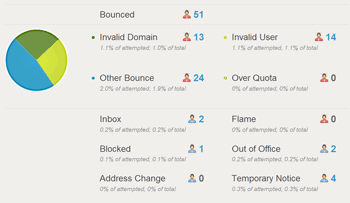As most email marketers are aware, Yahoo! announced back in early June on their blog that it was to begin recycling inactive Yahoo! ID’s, allowing people to potentially get the Yahoo! ID they’ve always wanted. This process has already begun as of the 15th July, so it’s important for email marketers to understand what this means for them.
A number of questions have been raised by clients surrounding the potential problems this could cause and general confusion as to what this could do to their lists of recipients. But fear not – here’s what you need to know!

What exactly is Yahoo doing?
- Any Yahoo! user ID that has been inactive for at least 12 months may be released and put up for reassignment
- This is not just restricted to @yahoo.com, but all Yahoo!-owned domains including @yahoo.co.uk, @yahoo.fr etc.
- Yahoo will attempt to unsubscribe the inactive accounts from the mail they’re receiving
As and when a Yahoo! ID is deactivated, there will be a 30-day period in which Yahoo! will bounce any messages sent to these deactivated addresses, before they are put up for reassignment. They will also, as stated above, look to unsubscribe these IDs from any commercial mail where possible.
What should I be doing?
Don’t panic first of all – if you’re an active email marketer that sticks to best practice in the ever changing landscape of email marketing, then you shouldn’t really see any significant difference. However, if you do start getting a high number of bounces from Yahoo! addresses, then it’s likely you already had a high proportion of inactive recipients on your email list. So there really hasn’t been a better time to clean up your data!
For MessageFocus users – take a look at your main mailing list, such as your newsletter list, and filter the results for @yahoo domains where a contact has no read/open event for the last 12 months. If you’re ruthless, simply remove them, or if you want to try one last time, use that same filter to send a targeted re-activation campaign to those ‘lapsed’ subscribers. Explain that you know they haven’t opened for a while and want to know if they’re still interested in hearing from you. If a series of campaigns aimed at these lapsed subscribers doesn’t work, then you can make a business decision at that point to remove them completely.

What will Adestra be doing?
As usual, MessageFocus handles all bounce backs automatically and will eventually suppress these addresses after they meet the known bounce conditions. The interesting thing however, is that Yahoo! already had a policy in place prior to this announcement that deactivated Yahoo! email accounts if they haven’t been logged into within 6 months (or more depending on how long the account was held). At this point, Yahoo! has always sent bounce back messages which means it’s highly likely anyone who’s address is being recycled after 12 months, is already a known bounce and will already be being suppressed.
Hopefully, this dispels some of the myths surrounding what Yahoo! are conducting, but if it does nothing more than to renew your vigour to make headway with cleaning up your data, then that can only be a good thing. As always, your Account Manager is readily available to discuss your account, from planning the type of reactivation campaigns mentioned here, to the many ideas and ways you could approach cleaning or targeting your data more wisely.

